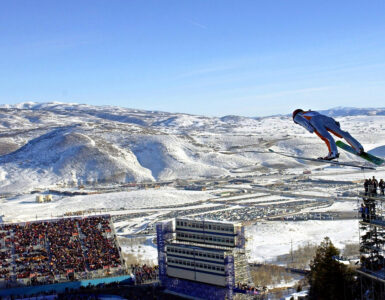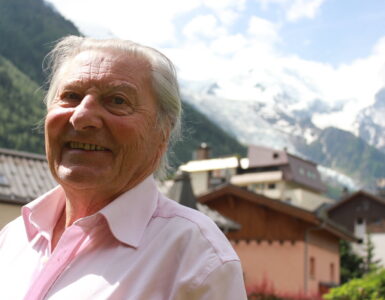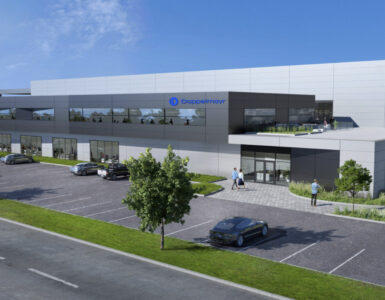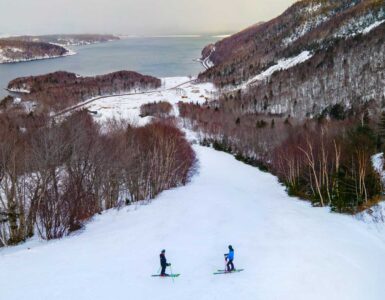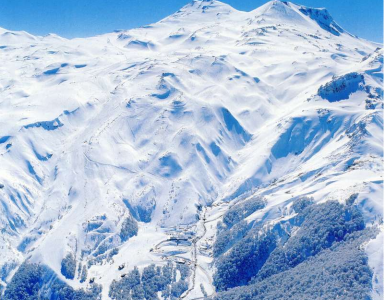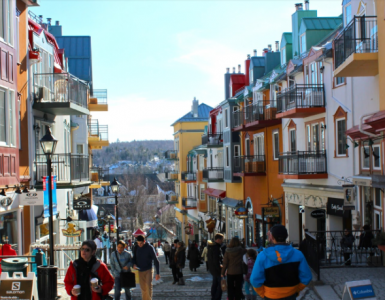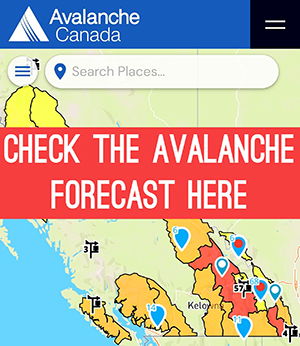Nelson BC’s funky ski hill gets a new chairlift; several smaller B.C. ski areas are also moving uphill.
Whitewater Ski Resort’s 10-year expansion plan could perhaps best be described as more of the same.
Much more of the same.
The compact west Kootenay ski hill, located 22 kilometres from picturesque Nelson, is renowned for massive dumps of dry champagne powder, challenging skiing and spectacular mountain scenery, if not for upscale Whistler-esque on-hill amenities.
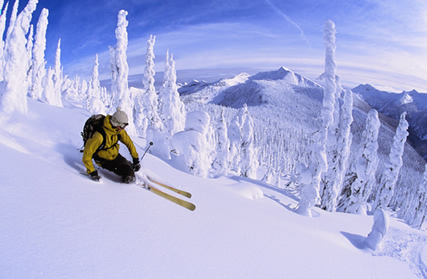
However, the lack of glitz is also a major part of the hill’s charm and has helped attract a steady stream of the continent’s pure skiing enthusiasts.
So Whitewater, which opens this season with a new $2-million Glory Ridge chairlift — its third — is sticking with what it does best as part of a $45-million expansion plan by Calgary based Knee Deep Development Corp., which bought Whitewater in 2008.
“We think this will mean a huge boost for Nelson’s economy,” Whitewater general manager Brian Cusack said. “It’s the first major terrain improvement [at Whitewater] in 35 years.”
The new chair — a refurbished three-person lift purchased in Vail, Colo., that’s part of the first phase of a four-phase plan — is deliberately fixed-grip for slower speeds. As well, the on-hill amenities will be attractive but subdued, and real estate development — the first of its kind on the mountain — is planned for 130 townhouses and single-family homes.
While Whitewater’s expansion is the most visible example — for 2010, at least — of smaller, lesser-known B.C. hills with big plans, others are also moving slowly but steadily ahead, and uphill.
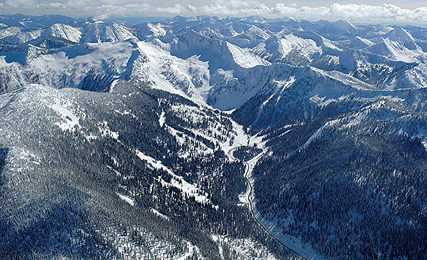
From Fairmont Hot Springs Ski Area in the east Kootenays to Mount Baldy near Oliver to Crystal Mountain west of Kelowna and Hemlock Resort near Agassiz in the Fraser Valley, plans are in place for major expansions, although some have been sidetracked by the recession and others are in lengthy approvals processes.
Ultimately, Whitewater will have 110 trails, up from last year’s 47, and eight chairlifts with a magic carpet, up from two chairlifts and a handle tow. At build-out, there are plans for a 20-room hotel and 23-room hostel, as well as enhanced hiking and cross-country trails in the summer. A golf course is not part of the plan.
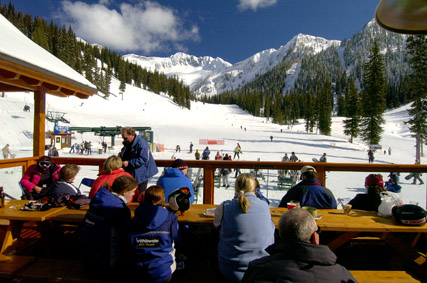
However, Whitewater’s new 623-metre vertical drop this season takes it a major step forward and its skiable terrain — rising to 533 hectares this season with build-out planned at 959 hectares — brings it into the realm of a handful of much larger interior B.C. resorts and will likely attract a more diverse range of skiers.
“It will double the terrain we have and will also put us into a different league — the 2,000-foot vertical club,” Anne Pigeon, Whitewater’s vice-president of operations and marketing, said. “That opens up a whole new market for us — the destination skier, from across Canada, the U.S., and also Asia and Europe. This year, we’ll have eight new-cut runs and an additional 17 gladed (partly treed) runs.”
The expansion plan will undoubtedly change the perception of Whitewater as a smaller hill for the “old-school” less-is-more skiers -but only to a point.
Although the terrain is vastly expanded, with an entire side of a mountain opened up, Whitewater is deliberately avoiding the high-speed glitz, partly because of Nelson’s “laid-back” lifestyle, but also to ensure that skiers don’t “plug up” the same runs with faster lifts moving skiers too quickly up the mountain. The slower chair is also meant to help allow for more fresh powder skiing throughout the day by “spacing” skiers more.
Further west, near Oliver, Mount Baldy is moving ahead with a four-decade expansion plan, having opened its new $4-million fixed-grip Sugarlump quad chair three years ago, with plans to add another chair in two years depending on the economy.
Two residential subdivisions have also been completed.
Mountain manager Matt Koenig said that Mount Baldy’s owner, Idaho-based Mountain Investments Inc., wants to increase the mountain’s vertical drop, from 395 metres to 643 metres, and its skiable terrain from today’s 142 hectares to 698 hectares.
The three-phase plan includes several new lifts, a new base area for ski-in, ski-out housing, and a hotel.
At build-out, he said, the resort would be similar in size to Silver Star near Vernon.
However, Koenig said the recession has slowed things considerably, especially because the mountain’s expansion is partly based on real estate development. “With the recession, it’s caused everybody, including us, to look at how we fund everything. The new chair, which will possibly be in two years, was (originally) planned for next year.”
Vancouver-based Oberto Oberti Architecture and Urban Design Inc., is designing the planned expansion of Crystal Mountain Resort, just west of Kelowna. Oberti said that the four-season plan — which includes greatly expanded skiable terrain, an increase in the hill’s vertical drop from 350 metres to 700 metres, a hike in chairlifts from two to 12, about 800 residential units, three hotels and an 18-hole golf course — has received its master plan approval and master development agreement from the province but is seeking its official community plan approval and first phase and rezoning from the Regional District of Central Okanagan.
Depending on what’s eventually built, the entire investment would range from $250 million to $450 million, he said.
“This is one of the nicest projects in the Okanagan,” Oberti said of the resort, owned by the Tschanz family of Switzerland. “At some time, it has to happen. The potential is tremendous.”
Oberti said he’s hoping that, with approvals, the resort could add two or three new chairs in 2012, although “the market would have to justify it.”
One of the most ambitious plans is one much closer to home: a huge, but lengthy, five-phase upgrade of tiny Hemlock Resort that would give Fraser Valley skiers a valid alternative to their three-hour drive to Whistler-Blackcomb.
The $200-million all-season plan, which is set to begin the public review stage of the approvals process, would increase the hill’s vertical drop to about 610 metres, the terrain to more than 1,214 hectares, the number of lifts from four to 23 and the number of trails from 35 to 283.
The proponent, Berezan Management of Langley, is also proposing at least one golf course, a large real estate component, an alpine village, and a full summer recreation plan including a downhill mountain bike park.
“It would be a massive expansion,” Hemlock general manager Kevin Bourdin said of the plan, which would see the hill upgraded to seven chairs and 77 runs over the first five to 10 years. “But it’s all contingent on the master plan being approved.”
Bourdin said about 90 per cent of skiers would be from the Fraser Valley but that “the long-term goal is to be a major world-class destination. It would ultimately be as big as Big White.”
Meanwhile, Steve Paccagnan, B.C. chairman of the Canada West Ski Areas Association, said that a number of the smaller ski resorts are working on their master plans and that he’s optimistic about the future.
“Do I see explosive growth? That’s not realistic in the current economy,” he said. “I see controlled, sustainable growth.
“These plans are long-term, rolling plans. They ebb and flow with market demand [and] they have to be reflective of the economic situation.”
He said that increased development of smaller ski areas opens up the province’s tourism potential by exposing visitors to new amenities that they might not otherwise know about.
Paccagnan said he’s encouraged about the developments at Whitewater: “Their new ownership group is passionate about their product.
“And Mount Baldy’s master plan has been approved. They’ve worked very hard and put in a new quad [three years ago]. They’re weathering the storm and working at a pace that reflects the current economic situation.”


